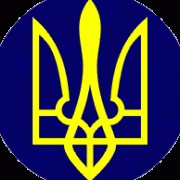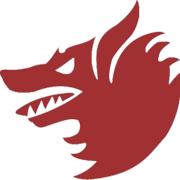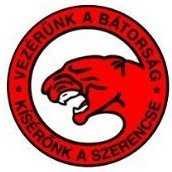Leaderboard
Popular Content
Showing content with the highest reputation on 09/09/2020 in Posts
-
I bought this kit quite a long time ago, I think it was one of the first LSP's I bought. I did so because it was 69 bucks, at the time I thought it was a bargain for a large scale Macchi 202. The I tried building it and found out why there weren't many builds of this kit around. What I remember from doing the interior is it required sanding down the inside of the fuselage a lot to make the resin fit. I got finished doing this, turned towards the wheel wells and that's where I stopped. Years past with this kit sitting in the shelf of doom. The pile of dust on it was quite impressive. It almost hit he bin a few times, the only reason it didn't was because I'd hate to have wasted 69 bucks. I picked it up last month and decided come hell or high water I would finish it. The wheel wells that proved difficult to fit were thrown in the bin, I then progressively glued together the bottom wing to fuselage, then gear doors were put into place followed by the upper wing sections. Those did not fit well and all of the wing to fuselage joint area has been sanded and shaved heavily then rescribed to get a decent fit. The resin oil cooler was too small to fit the hole in the resin lower cowling, itself being slightly under size. Some sanding of the plastic helped with fit here. Radiator was fine and the tail was average but some basic filling and sanding here fixed that. I did get stuck for a while with the canopy, windscreen and spinner. The spinner is too small for the back plate, this was just sanded to fit, which makes it slightly under size, but oh well. I had to take a lot of plastic off the fuselage to get the windscreen and canopy anywhere close to fitting. I decided for the colours, I liked the profile of one of the around 20 Croatian machines used on the Russian Front. The pictures of these machines are not the best, so I just guessed at what the markings might be, figuring German insignia was most likely with the Croat shield in place of the swastika to make things a little different (but this kind of thing was done with at least 1 POA machine). Markings came form the spares box along with the pilot.12 points
-
I grew up with this image hanging on our wall at home. If the drama of this picture isn't enough to inspire building a Korean War Sabre, then I don't know what will! The F-86 is one of the most beautiful aircraft ever produced, and many pilots (including Bob Hoover) consider it the finest to fly. It certainly has something to do with its sensual curves... as well as its rakish angles. It just plain looks fast, that you want to touch. There is a problem however - no kit in 1:32 does it any justice. Sure, there is the Hasegawa offering from 1972 with its raised panel lines, and the chunky plastic moulding from Kinetic (2007), but neither of them cut it. I have both. And lots of books. I have a real mish-mash of aftermarket stuff, and hopefully with a bit of this and a bit of that I can construct a satisfying F-86F 30. The first thing was to try and determine which kit, or parts of a kit best resemble the Sabre. I measured, compared and even tried to mate the kits. I personally think the Hasegawa Sabre is closer to the mark than a kit produced 35 years later! The "stressed skin" of the Kinetic (Italeri) F-86 was very tempting to me, but in retrospect I think it is not intentional, but rather a by-product of the heavy rivet treatment. Still looks good though, and with the chrish (LSP) foil treatment can look very convincing. Where it really loses out to the Hasegawa kit is around the cockpit. It is very broad, and the front portion of the canopy doesn't have the right shape. The kit air intakes are quite different from each other, and here again the Hasegawa part is closer to the lines of the aircraft. The Kinetic/Italeri wings, apart from being badly warped, are pretty accurate for the 6-3 "hard" wing. Here it beats the Hasegawa wing which is a little too swept and dimensionally kinda nowhere. My money is on the Hasegawa exhaust area however. I am leaning toward just using the Hasegawa big bits, re-scribing, and modifying the wing because I need a narrow chord wing anyway. Since I had the Aires cockpit for the Kinetic kit, I have been whittling away madly at the resin to squeeze it into the unintended narrow space of the old kit. I think it will work out eventually with shims and epoxy and maybe some nails or chewing gum. The usual resin cockpit conundrum. The Aires seat is very nice. And their instrument panel is almost correct, although the compass bezel is way too small. I might just have to live with some inaccuracies however, since the real work will be in scribing the panel detail, and getting the intake and engine to fit! I suspect however that the minute I get all of those cards balanced, Tamiya will announce the new 1:32 partner to their F-51 in Korea... just saying. Sean8 points
-
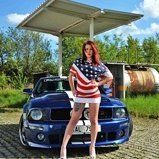
Mitsubishi A6M5a Zero, Sadaaki Akamatsu , Atsugi 1945
Brett M and 7 others reacted to Miloslav1956 for a topic
Another Zero finished. 1/32 Hasegawa kit, Eduard color cockpit & wheels, Yahu instrument panel, HGW wet transfers & seat belts, Aber gun barrels, All colours MRP test sample IJN8 points -
Engine joined to airframe... The prop is just slipped on via a poly cap. I still need to ship-in-a-bottle a few more linkages etc into this space behind the engine, but already I'm realizing how hard it is to see much of what's in there (it's dark, amongst other things, even with a bright light shining on it). Oh well, as they say, "I know it's in there" LOL. I got all eight of these guys made (and tagged because otherwise I'd never remember which went where). I'll get em painted tomorrow night hopefully.6 points
-
WWII Aircraft in Fabric (Especially USN) - Same paint as on metal areas?
Jan_G and 5 others reacted to Oldbaldguy for a topic
Surprised no one has jumped on this yet, so I'll give it a go. Seventy five or so years ago fabric surfaces on aircraft were doped, not painted like metal surfaces. Applying liquid dope to fabric is a multi step process that attaches, tightens, seals and protects the fabric. The final coat(s) of dope can be pigmented to match whatever color you want, although a doped surface is not going to look the same as a metal one because it is more like a bedsheet than a sheet of aluminum. The fabrics and liquids most commonly used at the time were Grade A cotton, linen and butyrate or something similarly organic and not the synthetic stuff you see today. Although supposedly the same color, pigmented dope almost never exactly matches the same color of paint. Dope does not lie on the surface of fabric like paint does but is pushed into the weave and becomes a structural part of the fabric covering. Paint doesn't do well on fabric surfaces because the fabric is much more flexible than paint, expanding and contracting underneath it and constantly in motion from vibration and simple use as the air presses on it -- think drum head and you'll get the idea. Additionally, it is very hard to repair or patch damaged fabric that has been painted with regular paint -- the dope used to adhere the repair to the rest of the fabric won't stick to paint, so the repair won't last. Ease of repair would have been a big deal in any combat theater then as now, so... As to fading, I think it is safe to say that not a single soul who frequents this site has actually seen the surfaces of an operational Corsair after a year or two of duty in the Pacific theater, so none can tell you with any certainty whether their fabric covered control surfaces faded differently than the rest of the airplane or not. However, based on my own experience with fabric covered airplanes and the contrariness of paint and dope plus the myriad photos from the day of Corsairs in the PTO, I'd opine that it would be the safest of bets that their fabric surfaces were not the same color as the rest of the airplane unless they were brand new. As in all things military, there are "book" standards and there is operational reality and often the two only vaguely resemble each other, which is another way of saying that there is no right or wrong in most situations, only generalities. Generally, fabric from that era will look and fade differently from the metal on the same airplane.6 points -
1/32 Mig-29C (9.13) Ukrainian "55"
Paul in Napier and 5 others reacted to Marcel111 for a topic
Here is where I am with the outer exhausts, basis of which are the beautifully done and correctly sized Zacto renditions. Chris sent me a spare set after I screwed up my first attempt... I tried to use liquid mask to create a splattered effect but just couldn't get the mask off, plus the paint would form a noticeable ridge at the demarkation in those instances where I was able to get the mask off. For the below, I started the painting with an overall spray of half flat aluminum / jet exhaust mixture (all metallic colors are Vallejo acrylic). This to get a duller overall finish, applying glossy metallic over such a surface will still result in a flatter finish because the metallic paints go on so thin. Next, I started applying various other metallic shades, at times using the Uschi splatter masks. Finally, I applied some old Alclad hot metal blue and violet shades. I found the blue to work really well while the violet would quickly clog my fine airbrush (went to the rough H&S instead) while the violet doesn't come through all that strongly. I'm pretty pleased with the result. Compared to the real thing, that is the Duke Hawkins book (a must-have for this build): Cheers, Marcel6 points -
at the stopping point for the day, the landing gear under construction;5 points
-
Not a bad fit. Not perfect, but not bad at all. I strongly suspect that I perhaps didn’t spend quite enough time making sure that everything was aligned exactly as per the instructions, and yet it does seem to me like I really did. Who knows.5 points
-

Quinta Studio - 3D printed interior for NEW P-51D, Su-25, F-16C
Darren Howie and 3 others reacted to thierry laurent for a topic
Hi Quang. I get this point but I do not see how I could get a similar result with a paintbrush. If you know a technique that allows the reproduction of such details, please share it with me. The only system that more or less reached a similar level of detail was the old Waldron print but each part was monochrome.4 points -
Take a look at this and then imagine how much better 1/32 would be. Quinta 1/48 for Tamiya Tomcat4 points
-

Mitsubishi A6M5a Zero, Sadaaki Akamatsu , Atsugi 1945
KUROK and 3 others reacted to Miloslav1956 for a topic
Thanks all! I am starting the construction of the A6M5c 1/32 Hasegawa, I will prepare photos of riveting and painting, step by step.4 points -
On to the wings…. The small blue identification lights was painted with Tamiya clear blue and then I glued a small piece of Aluminium foil (shiny side down) as the reflector. Italeri made the wings in very conventional way. Two separate pieces on each side, that feels very ”old school” today when almost all makers would do a three-piece wing and avoiding too many joints. I have to say that all parts fit very well, tough. More to come soon… Please move to "Work In Progress"! Stefan4 points
-
With COVID-19 lockdowns going on in Melbourne, I've been physically separated from this build (which lives on my yacht in Geelong) for several months! I'm currently doing CAD modelling of the fuselage sides, to check if it will be easier to 3D-print new sides rather than sculpting the fabric panels into the Texan kit fuselage side moldings, although that might still be a possibility. I'm also playing with a 1/72 Wirraway build... might post that on "Non-LSP Works" at some point in the near future...4 points
-
Bf 109 E4 trop Trumpeter 1/32
Nikola Topalov and 3 others reacted to ADP22 for a topic
Thank you very much again for your words guys, I leave some progress almost finished ... I still have some problems, I missed the color RLM02, I used the 1941 instead of the 1938, but anyway, it's still to take rhythm hehe..4 points -

Matchbox Tiger Moth RAAF Air Ambulance
Chris Wimmer and 3 others reacted to LSP_Kevin for a topic
Hi Derek, The entire panel is scratch-built, including the compass - though I can't take credit for airscale's dial & placard decals, or photo-etch bezels. Not sure how I would have tackled this panel without them! The compass is built up from punched discs, an idea I got from @VW Chris 1969 I believe. I meant to do a better job of removing the seams between the discs, but I found it impossibly small to sand. In the end, I think the seams provide some nice visual detail and texture, even if they weren't there in real life. The compass face is a decal from the airscale sheet, and I added a small generic placard on the body from Bare Metal Foil (which I've since painted over with flat clear to tone it down a bit). Kev4 points -
nozzle are open when engine is not running nozzle are open (per checklists should be above 94%) at idle thrust nozzle are closed at military thrust (they close gradually from 70% RPM (idle) to mil power) nozzle are wide open in AB Nozzle close during SEC operation (less than 10% open) regardless of RPM setting (AB is inhibited)3 points
-
Academy F/A-18 legacy Honet "problem"
Pete Roberts and 2 others reacted to Marcel111 for a topic
Have a look here:3 points -
Quinta Studio - 3D printed interior for NEW P-51D, Su-25, F-16C
Derek B and 2 others reacted to Anthony in NZ for a topic
I'm going to go out on a limb here and say that personally I like them. No different to when colour PE, and other media came out etc. I remember when PE became available, I was amazed what it was doing for our hobby at the time. I am a results builder. I will use whatever means available to achieve what I think is realistic. I simply couldnt achieve what these parts do and in my mind looking into a cockpit and seeing that would really impress me. Sometimes I have to scratchbuild cockpit items, but I dont enjoy it with failing eyes and clumsy fingers, this for me saves time and gives great results. Now if they would just bring out a 1/32 F-4J cockpit, I could put a lot of it in my FGR-2 I wonder what they have planned in 1/32??3 points -

Quinta Studio - 3D printed interior for NEW P-51D, Su-25, F-16C
Anthony in NZ and 2 others reacted to thierry laurent for a topic
Indeed. To me this will at last allow to get detailed instrument panels for sixties and seventies jets as they had tons of knobs and switches with white stenciling everywhere. And this white stenciling has always been a nightmare to be reproduced correctly.3 points -
A little progress today in the cockpit area, the joysticks have been added together with the control rod underneath: and this bit (!) is important but not very well covered in the instruction booklet: because the latter implies the pupil's rudder pedal mechanism is one piece, but in fact the curved extensions either side of the basic mechanism have to be added. Now the importance of these innocent bits suddenly hit me this afternoon when I was cleaning up the fuselage halves; they are the control horns which pass through the side walls to which the rudder cables are attached: so: Get these wrong and you've nowt to attach your cables to!!3 points
-
1/144 Jolly Rogers Airfield Diorama
Squizzy 78 and 2 others reacted to Warbird Kid for a topic
Couple more images with a few additions. Some little cargo bundles covered in tarps, some extra trucks, etc.3 points -
3 points
-
Thanks, fellas. I fear getting bogged down in this one, but at the moment my enthusiasm is high and my momentum is good. I'll post another update when work in the cockpit is a bit more advanced. Kev3 points
-
Finally done with the bomb bay! Completed the port sidewall, which was primarily control cables running the length. I might add a few last bits if the mood strikes me but at this point, I'm moving on to the bomb bay doors and then the engine cowlings. I need to be careful, this is typically the stage of a long build where I get into trouble, once I see that I'm getting close to the finish and start rushing. Must..... resist...... . Anyway, a couple of last pics of my work in this area. That's it for now, thanks again for looking!3 points
-

Mitsubishi A6M5a Zero, Sadaaki Akamatsu , Atsugi 1945
Tolga ULGUR and 2 others reacted to Miloslav1956 for a topic
Thanks! I always rivet before the paint.3 points -
Thanks to all responders! Time for the next episode in my MiG-21 Story…. The engine is built up and I have painted the fan with Alclad Aluminium… The landing gear wells glued to the fuselage…. The nose gear done, just some hydraulic lines and paint left to do later…. The wheel wells painted and washed…. There´s not very much aftermarket stuff for this kit but I found some really nice resin seats from Pavla. A detail kit from Verlinden…. More to come soon…. Stefan3 points
-
Air Intakes glued and painted…. Fuselage halves glued and the intakes glued, very, very nice fit here! The cockpit and wheel well glued to the bottom piece…. I´ll leave this joint unglued for now so I can get a good fit against the radome later. Ejector pin marks in the intakes, Yikes! I suppose they will be invisible when done! But I sanded them down as much as I could anyway, I just can´t leave these things! The fin glued to the spine, excellent fit but just a very narrow edge to glue it to, a real indentation had been better and much sturdier! Morer to come soon! Stefan3 points
-
The cockpit drybrushed with a dark grey (Hu.27)…. Side consoles drybrushed and glued…. A wash with my regular mix of artist oils (Lamp black/Burnt Sienna) and white spirit in the nose wheel bay…. The instrument panel painted with Alclad Black Microfiller Primer…. …and gloss coated with Alclad clear Kote Gloss…. There were no instrument decals in the kit so I used those from Mike Grant…. All instruments have to be cut out individually, little on the fiddly side but it looks great! To finish it off I gave the IP a matt clear coate and gloss coated the dials. The instrument panel glued in place… More to come soon… Cheers! Stefan3 points
-
Hello, First one of the year at last. Hope you like it.2 points
-
Bf 109 E4 trop Trumpeter 1/32
Nikola Topalov and one other reacted to ADP22 for a topic
Hello, this is my first post, in a brief intro, I am a 1/35 scale modeller of vehicles rather than airplanes, returning after years of not painting or assembling anything, now I get on airplanes. the model is the Trumpeter box of the bf 109 E4 trop in 1/32 ... I don't really have much experience, but so far it has been a headache to put it together ... the cockpit decal is much larger than the board was thus discarded, among other problems ... white 3 in comparison with the photos of the original, the number is oversized, etc ... by the way I am mounting it without any after market, direct from the box to go practicing. I consider myself after a long time without painting a novice .. so, if you have suggestions or criticisms, welcome PS: I also leave photos of the base for the future diorama, and in case my English is rough, sorry, I speak Spanish. REGARDS2 points -
Academy F/A-18 legacy Honet "problem"
Pete Roberts and one other reacted to Piero for a topic
Sorry for this but I'm going crazy... I'm building my first Academy's F/A-18C kit and this evening I was looking at the shape of the big dorsal spine ... wait a minute... this dorsal spine looks really too "round" for me. Following DACO's book pics are used only for discussion purpose. This panel line looks in wrong position to me... And take a look at these.... What do you think? CIAO! Piero2 points -
Quinta Studio - 3D printed interior for NEW P-51D, Su-25, F-16C
thierry laurent and one other reacted to Rob Colvin for a topic
Had a quick thought....perhaps it has already been said.........The Tamiya tomcat is made for this type of application......Just saying if Quinta is watching this space.....Do the Tamiya cat!2 points -
No special way, all freehand with the tan nozzle on an Aztek airbrush. It did take me a couple of hours though. I've built their G55 too, it's a much better kit but still a challenge.2 points
-
Hi Albert, So retirement is the key.....hmm that will take a while in my case I am afraid. Do not worry about superdetailing, I try my best but I never reach the level I see from a lot of people over here which is not a problem anyway love to watch it. I saw some pictures on Jari's Flickr account from some very weathered Phantoms. I really want to do that but it is so easy to go overboard and mess things up. I must try to find some more pictures from very weathered Phantoms and take a deep breath I guess.2 points
-
You'd want the open ones which "everyone" offers as an aftermarket replacement option. The Tamiya T-bird kit provides both options for the P+W nozzle since they had the inflight display option in that kit but no such luck for the GE kit. With so many open GE aftermarket options around, thankfully ResKit has recently released finally a closed GE nozzle too (I've been looking for one for inflight display). Someone else can chime in for exact positions for off, idle, cruise, MRT, afterburner, etc.2 points
-
Thank you! That's how I made the aerial wire: The wire itself is Ushi's rigging material. The insulators were made from heat-stretched tubes, which were thickened and "bulged" with white glue. The springs were made from tungsten fiber from old lamp bulbs. The funnel-shaped coverings are made from heat-stretched plastic sheet. I pulled all the elements (2 springs, 4 insulators and 2 funnel-shaped covers) onto the radio wire before gluing the antenna in place I worked with it for a few hours until it was done... Best wishes, Sándor2 points
-
2 points
-
A few hours fighting with Dragons instructions and photo etch and the wings are now closed up. I tried...I really tried to get all that p.e. Dragon include to make the control surfaces movable. I finally admitted defeat ripped it all apart and glued the control surfaces solid. Not like I take my models down off their dust collection points and move the controls anyway. The first problem with all this is Dragon illustrate the p.e. being attached to the upper wing half when it should show the lower wing half, partly my mistake for not noticing this (Anybody else have issues with Dragon kits instructions?) so all the p.e. components were installed upside down. once removed and corrected the flaps flopped around loosely and the pivot pins for the ailerons gave me fits trying to get them in! (They're bloody tiny!) deciding enough is enough I pulled the ailerons and flaps off the wings destroying the pins and loops holding them and glued everything solid, doing myself a solid and hitting the elevators and rudder with glue at the same time. The flexible plastic wheel bay liners were quite warped but by fitting the top part and clamping the wing halves together and manipulating the lower joint with long thin blades and scribers I was able to get a mostly acceptable fit. Enough whining... Thanks for looking2 points
-
Combining FAA and interesting is an Oxymoron. Sorry mate.2 points
-
I'm already beginning to strongly suspect that the plastic torsion bars will sag over time, just like they've proven to have done in real life, so I intend to epoxy the daylights out of them, prior to gluing the hull halves together, using the road wheels themselves to establish the proper "sit" that I'm after.2 points
-
1/32 D3A1 VAL?
Gazzas and one other reacted to ringleheim for a topic
The Japanese kit makers are definitely patriotic when it comes to some of the iconic Japanese stuff from WWII. They all have a ton of Zeros, Yamato battleships, etc. And yet no Val or Kate. And even a lot of the WWII Japanese aviation stuff available in 1/48 scale is now very dated and could use a retool. It's weird!2 points -
Thanks Black Mamba. Yup, get rid of old stock on trees and anthills first.... I gave the paint job a very gentle rub down with wet 12,000 grit micro mesh cloth to get rid of the slightly fuzzy, rough finish of airbrushed matt paints. IMG_6196 - 800 by Malcolm Reid, on Flickr A bit of random airbrushing of thinned dark paint to add some more character - the mottling from the airbrush mask is very subtle. This is a new technique for me and I like the result : IMG_6201 - 800 by Malcolm Reid, on Flickr All bombed up and ready for a flight to Roodewal IMG_6199 - 800 by Malcolm Reid, on Flickr2 points
-

Matchbox Tiger Moth RAAF Air Ambulance
Chris Wimmer and one other reacted to LSP_Kevin for a topic
Right, time for an update! I've spent most of the last 3 days scratch-building a replacement instrument panel, having already decided to go to town in the cockpit. And yes, I did check to see if there were any aftermarket options available, first! Sadly, not to be. In fact, apart from the odd decal sheet, there's virtually no dedicated aftermarket for this kit at all. I elected to go with the tried-and-true 'sandwich' method, whereby you sandwich a sheet of acetate (or other clear plastic) between a back plate and the instrument panel itself. Here's the result: I'll let you guys figure out which is the kit part. Remember, this is several times larger than the actual item! I relied heavily on the wondrous gift to superdetailers and scratch-builders that is airscale's range of decals and photo-etch sets. I did set out describing how I built this in some detail, but started to bore even myself, so if you have any questions, just sing out. I've also been working on improvements to the empennage, and have started rebuilding the cockpit interior, but will leave that for another update. Kev2 points -
2 points
-
The story of the F-104G in the Luftwaffe is remarkable in itself, never mind the awe inspiring technological advances the aircraft embodied at its first flight only 9 years after the end of WWII. Despite many hardships in operating a total of 916 F-104s over a 30 year period, the Germans showed their Teutonic resolve, and made a success of their Starfighter program. It has been very satisfying building this model, and the research that went with it has given me a better perspective on the much hyped "Widow-maker". It is a beautiful aircraft to look at, and regardless of some typical Italeri niggles, the kit captures the lines very well. I eventually chose to build one of JaboG 31's "Jagdbomber(s)", as that was the primary role of the Luftwaffe's F-104G's. Should you be interested, here is a link to the build thread: For a change, I think I should just let the photo's tell the story... Cheers, Sean2 points
-
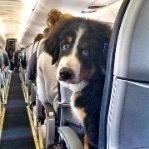
Quinta Studio - 3D printed interior for NEW P-51D, Su-25, F-16C
Derek B and one other reacted to Pete Fleischmann for a topic
I ordered 2 sets for the F-16. I think they look pretty cool. I noticed one or two things missing that I’ll have to scratch, depending on which block I am doing. They’ll sell a bunch of these I bet. cheers Pete2 points -
MiG-21 UM "Mongol"
Daniel Leduc and one other reacted to Phantom2 for a topic
Hi All! I found this kit dirt cheap many moons ago, I couldn´t resist the crazy scheme and started it right away. But the build stalled after the nose gear bay and cockpit, don´t know why, really. The Czech Stress-Team was a unit for combat training, very much like the US Top Gun unit and have a similar job, training units in combat and tactics. I don´t know if they are still active, anybody here knows? Who can resist this grin? This is a really early Trumpeter kit and it shows, well molded and quite detailed injected parts, a small and crappy instruction sheet and useless decals. Later I found out that this is a up-scaled copy of Academy´s MiG-21UM/MF, Academy´s kit is a good one so let´s hope this will be good too. I started the build by building the nose gear bay, complete with the nose gear leg (metal!) in place. The nose gear leg is screwed in place, Tamiya-style. I will not have the engine on show so I closed up the fuselage and glued the two sections together. Wings, wheel wells, seats and cockpit fell together quick and easy. The two fuselage halves filled…. The engine is quite nice, but I´ll paint only what will be seen. Nice detail; The engine done…. More to come soon! Stefan2 points -
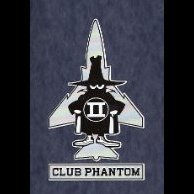
F-104C, 435 TFS, a 'Pussycat' at Udorn, 1967,
Lee White and one other reacted to Daniel Leduc for a topic
And part two.... Hope you liked it, thanks for watching and have fun, Dan.2 points -
1/32 Mig-29C (9.13) Ukrainian "55"
Paul in Napier and one other reacted to Marcel111 for a topic
Hi guys, here are a few I Phone pics to prove that this build is alive and well. I have run into a few challenges but am really enjoying the kit. This part of the CWS cockpit fit is ok... needs quite a bit of filling and sanding but that's no problem on this section. The LERX extension as it is right now. I must say I thought this would be a lot easier than it is turning out to be, getting the right contour seems to be almost impossible. I am using the Zacto exhausts which are incredible. My approach to replicating the various shades of silver, gold, violet and blue on the exhausts was to spray a color and then mask off some sections and spots with liquid mask... note that the color transitions are hard so I am not keen on a soft-edges, airbrushed transition. Incidentally, this product worked really well: Before starting to remove the liquid mask, things looked quite promising: However, I then struggled to remove the liquid mask and when I did it left a slight ridge. So back to the drawing board, fortunately Christ (Zacto) sent me some replacement outer exhaust sections so that I can easily start over without losing too much time and exhaust detail. Cheers, Marcel2 points -
As usual, I glue everything that´s possible before having to paint. ”Mini-builds” as the cockpit, bang-seat (which I will not use) wheels, landing gears, wheel wells, weapons, and all those small subassemblies in a kit. The seat in the kit is… OK, but I always prefer a resin seat with molded seatbelts. The only M.B. Mk.4 I could find was a seat from Isra-Cast, but did Israel use the same seat as France? Anyway, Isracast´s seat is miles ahead of the original…. The wheels did i find in Eduard´s Brassin range, as usual very nice and just enough weighted. The wheel wells are nicely detailed… The seat and wheel hubs painted with Alclad Black Microfiller Primer (ABMP)…. The detail in the wheel wells really pops out under the ABMP…. ....and in the nose wheel well…. …and the cockpit… The detail are OK, but it could have been better…. More to come... Cheers, Stefan2 points


